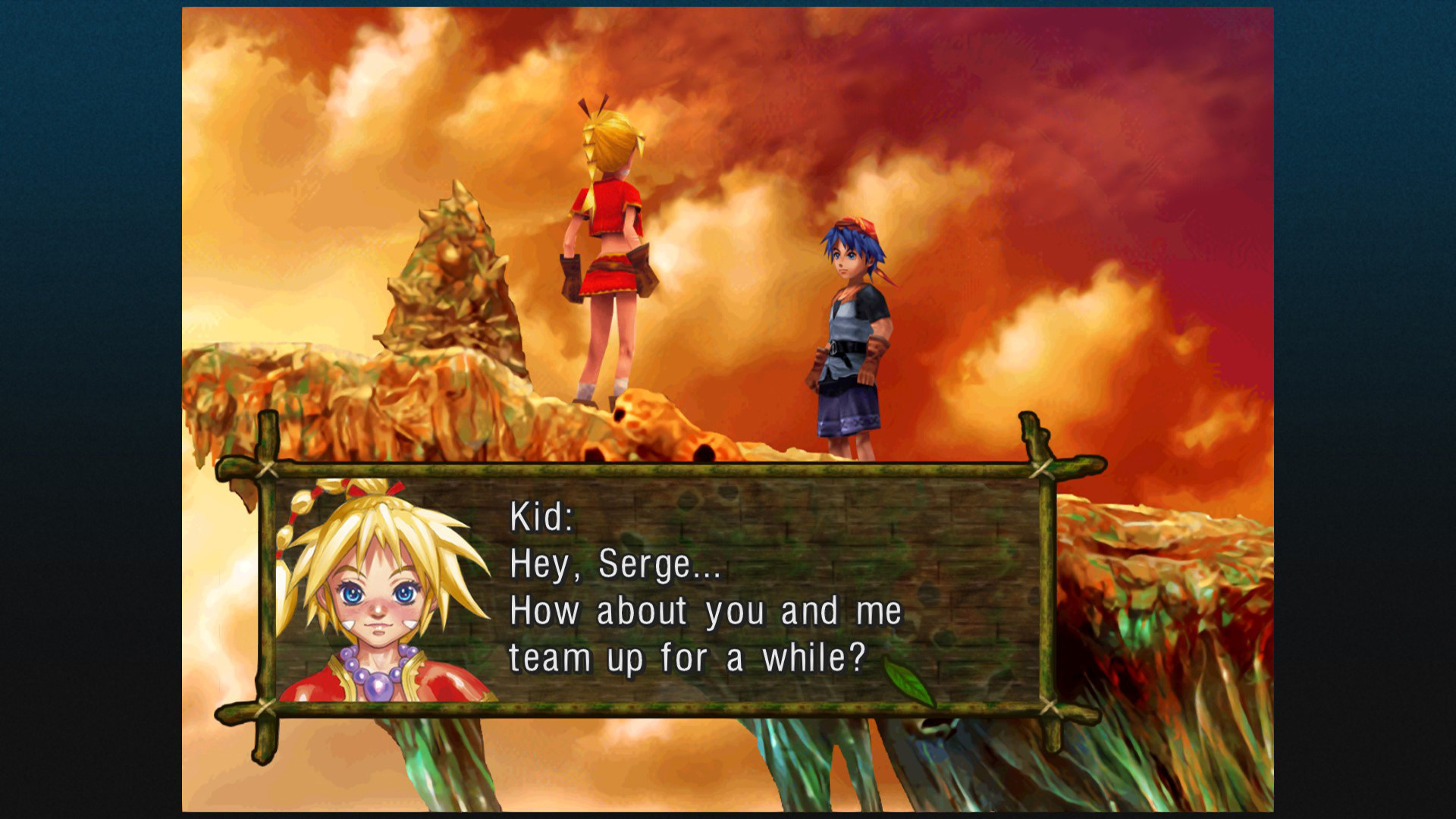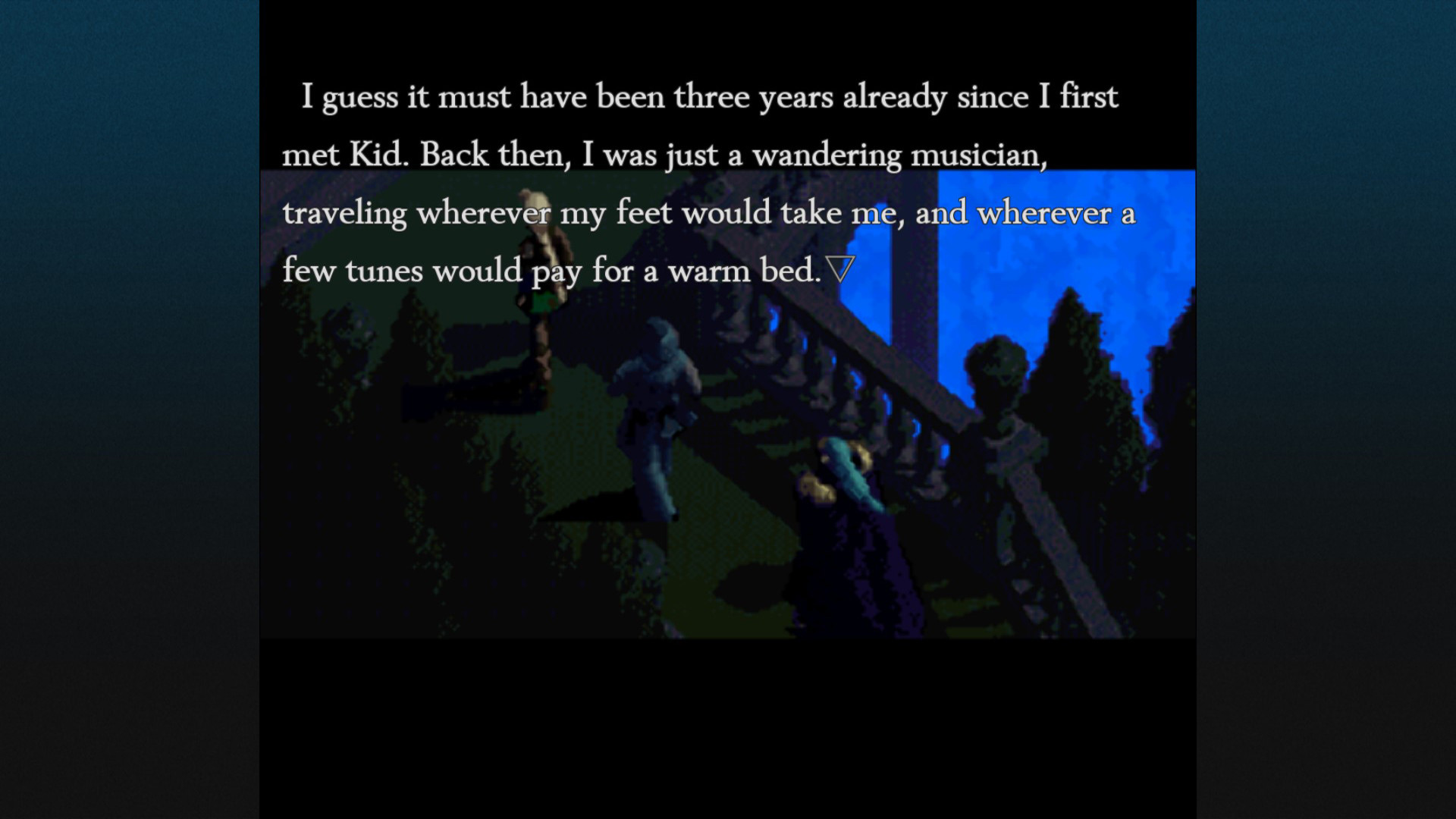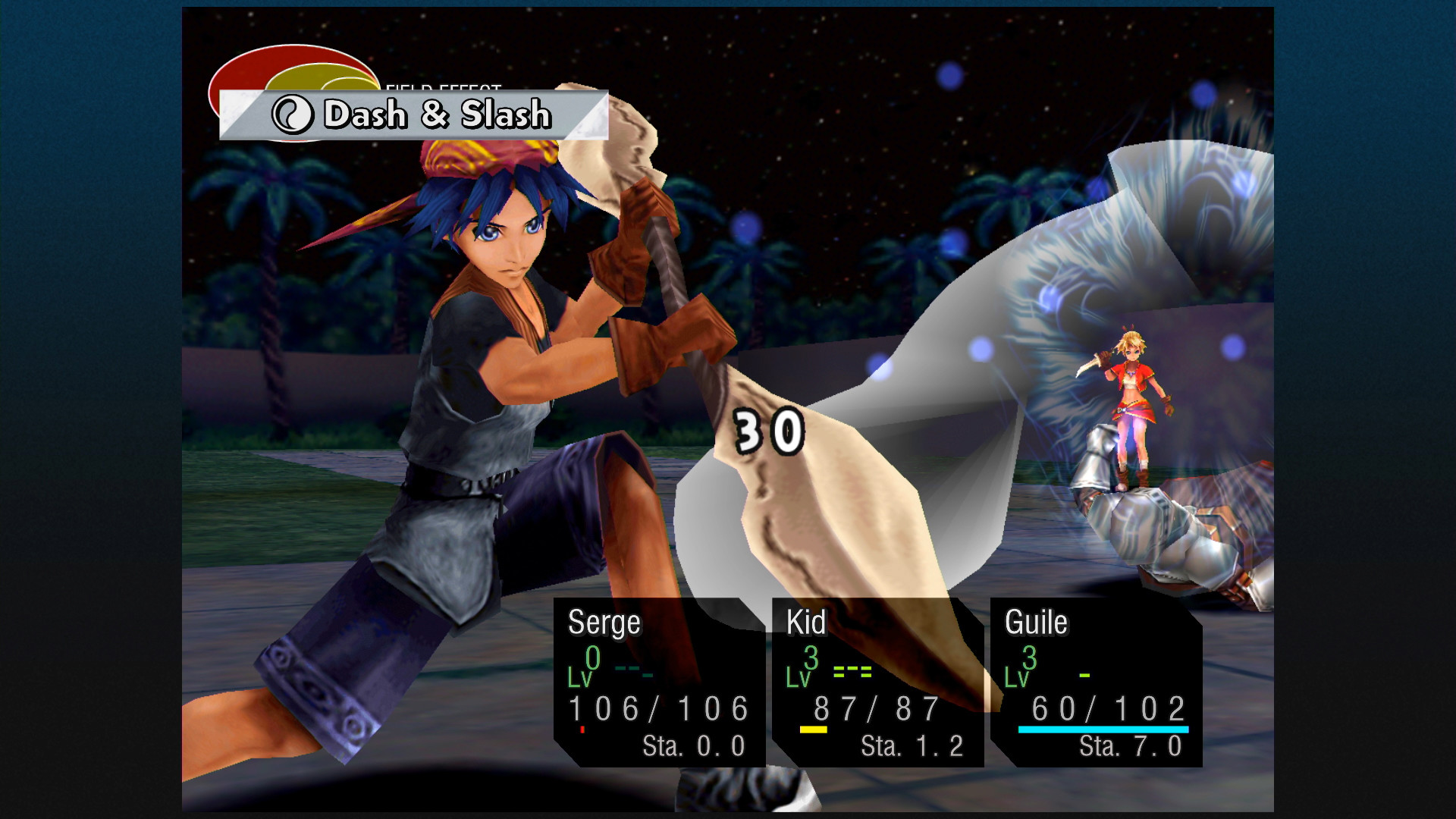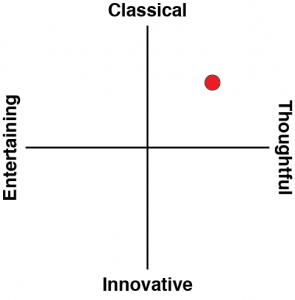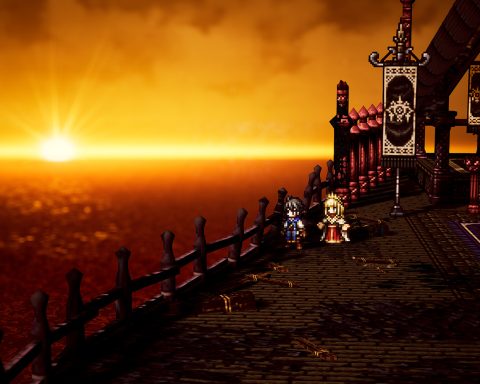This is the first time that Australians have been able to (legitimately) play Chrono Cross. So, if you’re like me and have never played it before, congratulations! It is the year 2022, and now you get to play one of the greatest JRPGs of all time.
Chrono Cross is set in the same world as Chrono Trigger, though if you haven’t played that seminal classic (what the hell?!?), you will be able to play this without an issue, as the stories are effectively independent of one another. The core theme of this one is that of parallel worlds. You play as Serge, who is very much alive in one world, but is drawn into an alternative universe where some kind of disaster had instead killed him. Once he gets over that shock and starts to wonder why he’s on an entirely different version of his planet, he also discovers he has the ability to travel between both the universe where he still exists and the universe in which he doesn’t.
The nature of the butterfly effect being what it is, the two worlds have spiralled in very different directions over the time where Serge was dead in one world but not the other. The first major application of this comes after the first major boss battle, when one character is infected with a deadly toxin that only some part of a hydra (I actually forget which part… blood, perhaps) can counter. The problem is that on that world there are no hydrae left – they’ve been hunted to extinction. So Serge needs to pop over to the other world so he can slay a hydra and rescue his friend.
From there you’ll go back and forth between worlds, solving problems and observing just how different things can be were time to split at the point of a major event, with two separate outcomes according to each timeline. A JRPG Sliding Doors, if you will. In typical Square style, there’s plenty of complexity within the narrative, which uses the dual “alive but also dead” status of the hero to examine the very nature of existence. It’s handled with the relative brevity of narrative and cut scenes from that era (what would take a half-hour cut scene today would be handled with two lines of dialogue back in the day), but if you’re paying attention and then start reading the works of Sartre and Camus, you’ll see the existentialist pondering that goes on within Chrono Cross.
This game is particularly concerned with the question of self, the impact of the self on the world and the relationship dynamic between the two. It’s the question of the self and its relationship (and impact on) reality, the environment, or simply those around that individual. It raises questions about what is a person’s identity, how is that projected into the world, and what impact it has if that identity no longer exists. Right from the start the game is basically asking “is the existence of the self – any self – a net good in the cosmic order? Is there value in life at all?” and it does predictably wander down some dark philosophical roads in asking players that, much like the Final Fantasy series itself does.
However, Chrono Cross is not a game that’s trapped in its own head, either. It is frequently funny right through to the surreal. One side quest involves you travelling the world to pick up the bones of a talking skull that has somehow been lost all over the place. At other times it knows how to be evocative, even romantic, and with every step of the journey, it never forgets to be compelling. It’s also very character-driven, with an eclectic and absolutely wonderful cast, of which there are almost no duds. At first, I was a little concerned that the massive roster – 45 playable characters in the end – would mean that some of the characters were short-changed and used in the game as utility, rather than given real arcs. Most game developers struggle when trying to handle five characters, let alone nearly fifty. Thankfully my concerns didn’t play out. Of course, the size of the roster does mean that, outside of Serge, you don’t get to know the characters quite as well as you would in a Final Fantasy game, but there’s enough there that the plight of each character does feel like a meaningful individual with a core role to play in the overall tapestry.
You won’t get all the characters from any single playthrough, however. There are many branching paths through Chrono Cross. Some are obvious and others are not, but the route you take through can substantially affect the party make-up, and therefore the stories that you get to see that time around. This is all woven beautifully into the game (to the point that I wasn’t even sure that I was making decisions that would affect my eventual party at times), and suits the thematic core of the game. After all, if we’re examining the impact that an individual can have on existence, then the outcomes can’t be universally the same based on the decisions that the individual makes. Linear narrative wouldn’t have worked here. As a consequence of this narrative scope, despite being of relatively few words, Chrono Cross leaves the impression of a true epic. In short, this game is huge, potent and has something to say.
It also plays beautifully, with a turn-based combat system that, having now experienced it, I can see in many other JRPG greats that came afterwards. Basically, you assign re-usable magical abilities to a range of “tiers”, with higher tiers unlocking as you level up, and allowing for more powerful spells to cast. Then, in combat, you need to strike enemies with physical abilities to collect energy that can be used to power the magic. Those physical attacks can be unleashed in lots of three, from high percentage, weak attacks, through to high-power, low-accuracy finishers. The final spanner in the works here is that a character can attack multiple times in a single turn, with the percentage chance-to-hit increasing with each previously successful attack, so the idea is to build up a few weak attacks first, before launching into a powerful one with an improved accuracy score.
This overall system is elegant, strategic, and makes encounters with common enemies almost as involved as the boss battles. It also forces you to mix up magic and melee, and does a better job of preventing you from spamming your way through each battle than most modern JRPGs manage. If there’s a slight negative to the combat system it’s that can slow the pace of forward movement through the game down (it’s rare for a battle with even common enemies to end in a single turn), but it’s also easy to avoid enemies for the most part if the combat is inhibiting the progress you’d like to make (enemies are positioned on the map, and you do have access to an effective dash button).
Aesthetically, the only problem is that the character models have been bumped up in clarity and resolution, while the backgrounds haven’t had the same treatment. It’s less noticeable than in the PlayStation Final Fantasy re-releases (on account of the backgrounds being of higher quality in the first place, and unlike in Final Fantasy VII through IX, some effort has also gone into updating these for the remaster), but there’s still a disconnect between the character models and the world that isn’t there in the original release. That being said, the character models do look good in themselves, the art direction is absolutely gorgeous, and the soundtrack is sublime. This is a beautiful game that showcases the strength of the PlayStation One to display art, rather than highlights its weaknesses as a piece of hardware.
There are plenty of quality of life and feature improvements too. The most significant of these is the implementation of autosave and the ability to speed up time. For the modern player, these are both essential and expected features. There’s even an auto-battle mode for people that want to do some grinding but really want to be hands-off with it. Finally, there’s the inclusion of Radical Dreamers, which is an excellent visual novel that further builds on the lore of the Chrono universe. This has never been released in English before and its inclusion alone makes this purchase as essential for those that have played the original Chrono Trigger as those who have not. Interestingly, the reason that Radical Dreamers hadn’t been localised previously was because the director of Chrono Trigger and Cross, Kato Masato, was very unhappy with its quality. He’s being way too hard on himself for that, and its great for everyone that he doesn’t get to exercise that kind of control over the project any longer.
Like the best in literature and the arts, by the time Chrono Cross’ credits roll you’re going to be left in a reflective mood. It’s not just that it’s a very good game – though it is – is also that it’s a probing work of art that asks meaningful questions of the players and respects them enough to allow them to come to their own conclusions about it. This is the first time that we’ve had the opportunity to play the game here in Australia, and it’s telling that this 23-year-old game comes across as one of the most forceful steps forward for games as an art form that we’re going to see this year.


